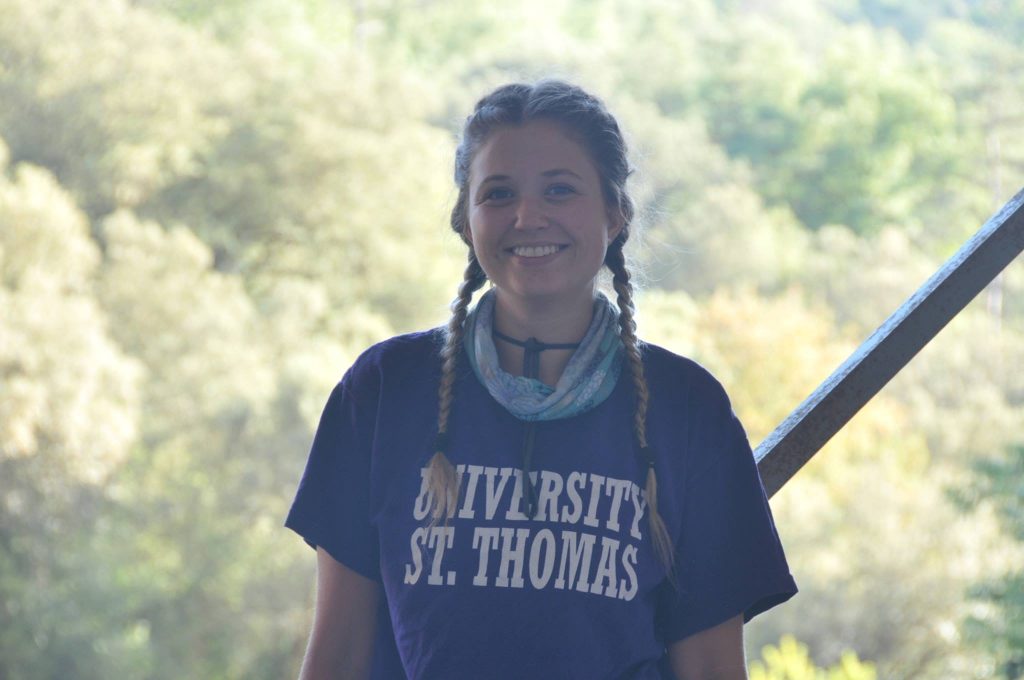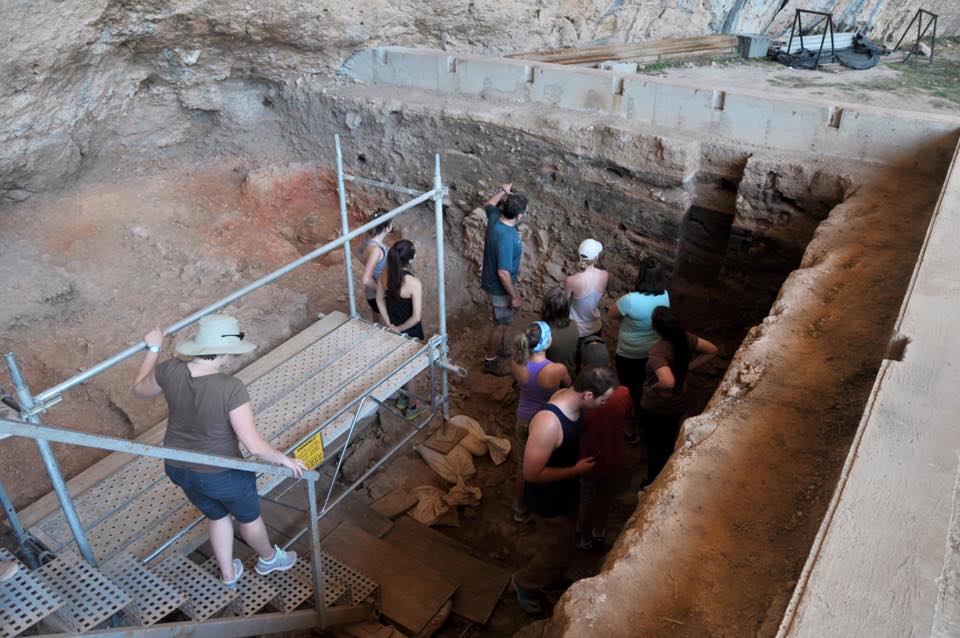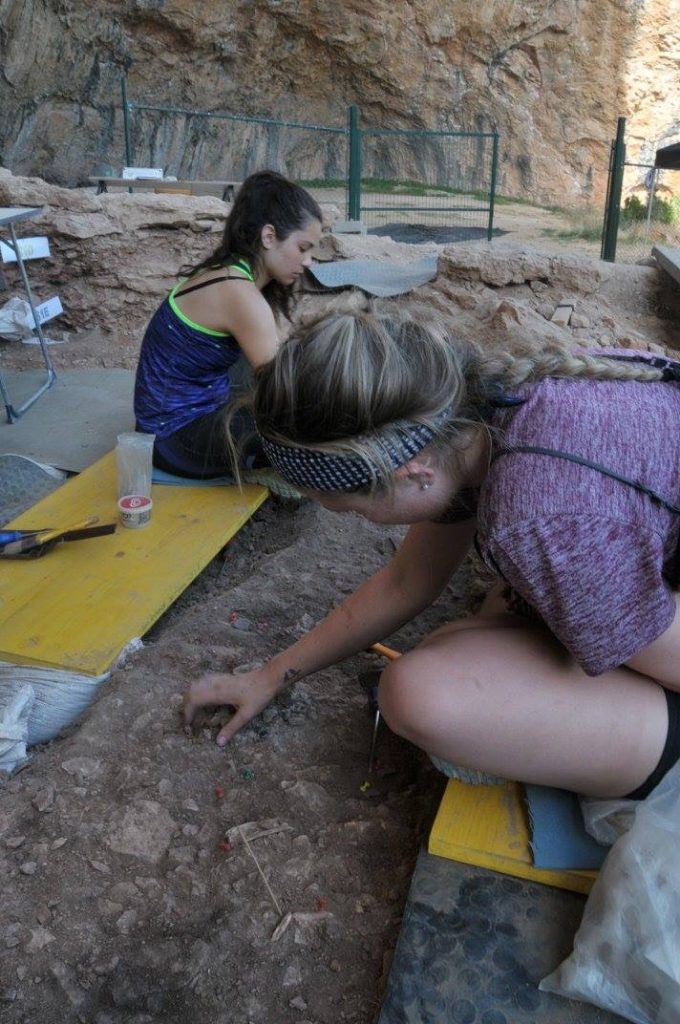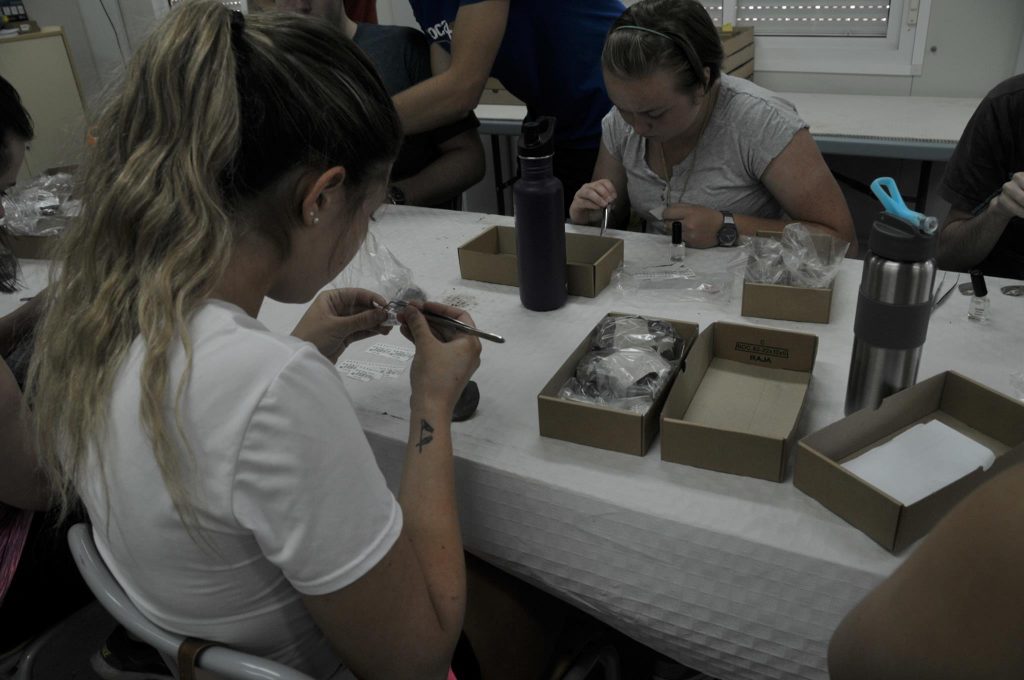Justine Lloyd is an undergraduate Art History major who had the opportunity to take part in an Archaeological Field School this past summer in Spain.
At the base of the Pyrenees in Santa Linya, Spain, a rock shelter known as Cova Gran has been the focus of researchers at the Autonomous University of Barcelona since its discovery in 2002. The fascination with the site is due to the extensive evidence of both Neanderthal and human occupation as early as 50,000 years ago and into the Neolithic and Bronze Ages. Each summer, a team of researchers, accompanied by undergraduate students from the United States, travel to rural Catalonia to excavate the site. As a visiting student from the University of St. Thomas, I had the opportunity to contribute to the 2016 excavation season.
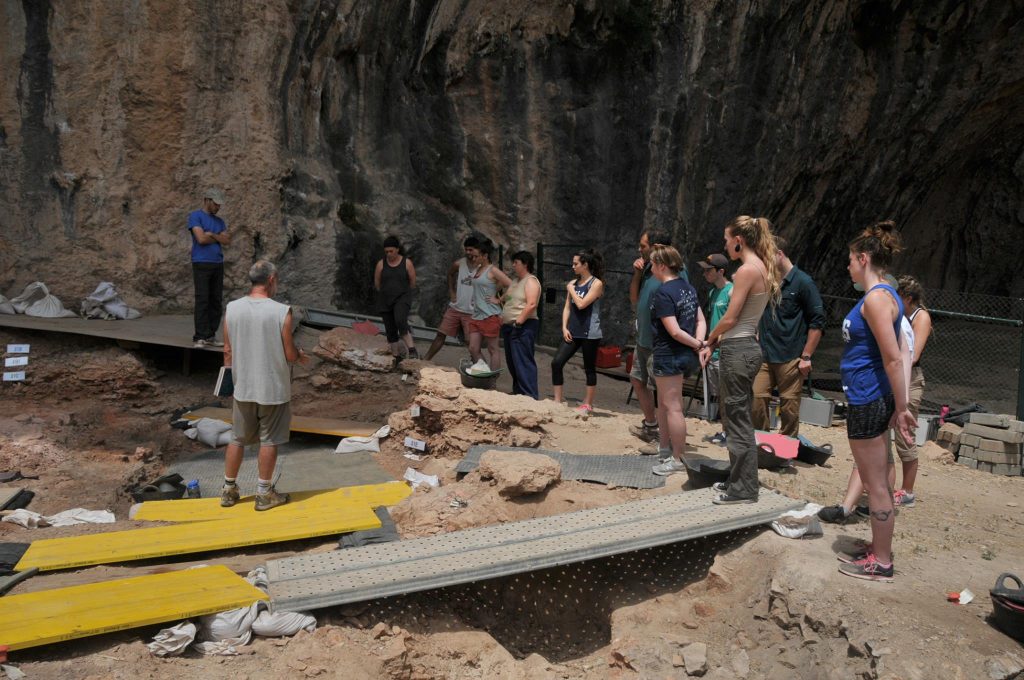
The foremost goal at Cova Gran was to learn about the behavior of Neanderthals and humans. Past years of the excavation have focused on mapping the transition between Neanderthals and Homo sapiens by identifying the differing sedimentary levels of the Mesolithic and Neolithic ages. Our job was to attempt to understand the histories of populations on the site in the last 150,000 years, and the trends in cultural change by uncovering and analyzing the materials found. The majority of our findings were either animal bone fragments or small tools knapped from flint or quartzite. Each action we took in the excavation was aimed at being as careful and efficient as possible. Fortunately, we had the help of some pretty cool instruments, like the Total Station, which uses a virtual grid for spatial reconstruction, and the Personal Digital Assistants, which interpret contextual information about the artifacts on site. Fancy names aside, the work mostly consisted of digging, brushing, and picking through layer after layer of dirt.
Each morning was spent working in a lab cleaning, analyzing, and recording the artifacts on a database. We used a computer program that combined the information we gathered from the Total Station and Personal Digital Assistants on site with information about the specific artifacts offsite to illustrate trends and patterns within the sedimentary layers. Essentially, we were finding out what different areas of the cave were used for and the years in which they were or were not inhabited. It was so rewarding to be able to combine physical labor and research to yield such fascinating results in the insight we gained into the differences in evolutionary behavior among the cave’s past residents.
As the only art history major among nine anthropology students, I was very suddenly and completely immersed in a field I had little experience in. However, any feelings of stress were overpowered by my fascination with our findings. I learned so much in such a short period of time—being able to work hands-on at the cave and take part in lab work gave me an understanding of the material that I could never have attained elsewhere. I benefited so much from my peers and their knowledge in the subject, and by the second week I had the confidence that they learned from me as well. The concept of understanding the past to improve the future is important regardless of scholastic discipline, especially with the current state of the environment. Working at Cova Gran has given me a larger landscape of understanding the world at large—both past, present, and future. I am also grateful to have had the opportunity to be so immersed in the culture of Catalonia. The academic and personal skills I have learned on this trip are invaluable.
